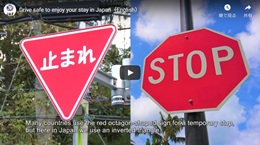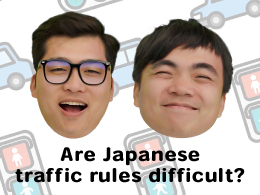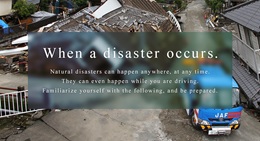Driving a Motor Vehicle in Japan
For All Those Driving a Motor Vehicle in Japan
Traffic Rules in Japan
Basic Rules for Drivers
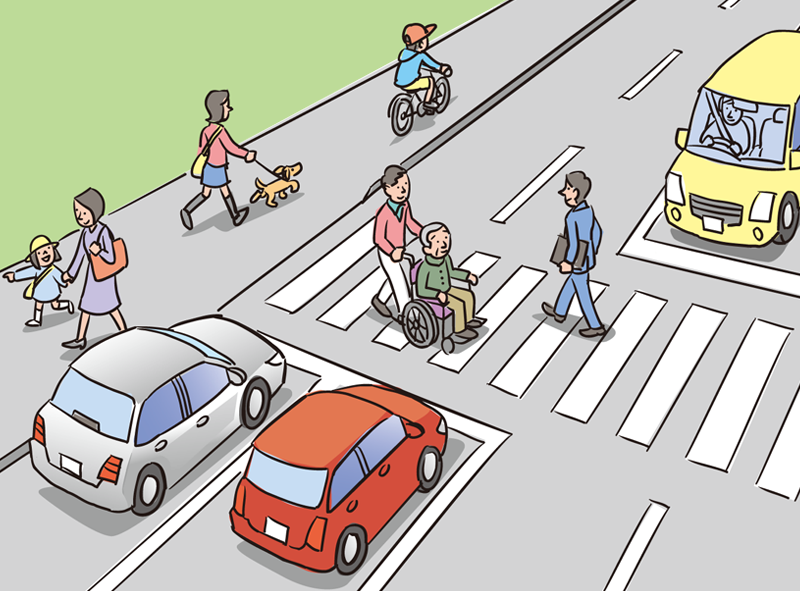
Pay attention to pedestrians and other vehicles in traffic. Drive with care for others.
- Drivers and cyclists must keep to the left, while pedestrians should keep to the right side of the road.
- Drivers must yield to pedestrians.
- You must not drive under the influence of alcohol.
- You must not exceed the allowed number of passengers or load.
- While driving a vehicle, you must not use a cell phone or be distracted by the car navigation system.
- When you drive a vehicle, you must wear a seatbelt. All passengers in the vehicle must also wear seatbelts.
- When you drive with an infant younger than six years old, you must place the infant securely in a child seat.
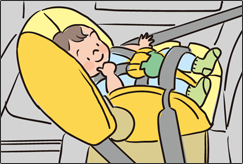
Baby bed
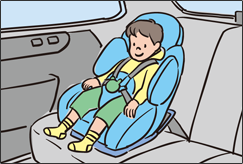
Child seat for infants
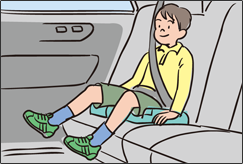
Child seat for schoolchildren
- Maximum speed limits for vehicles are shown on traffic signs and road markings. You must drive safely within the specified speed limits. When there are no signs or markings indicating the speed limit, drivers of regular-sized automobiles must obey the speed limits of 60 km/h on ordinary roads, and 100 km/h on expressways.
Examples of road signs in Japan
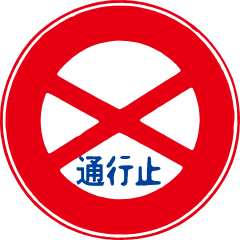
Road closed

No overtaking
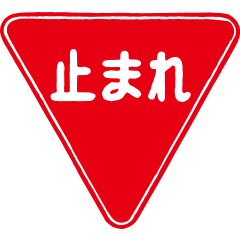
Stop
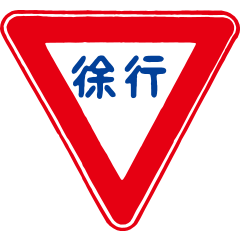
Drive slow
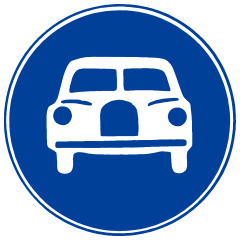
Automobiles only
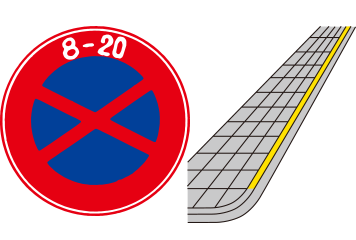
No parking or stopping
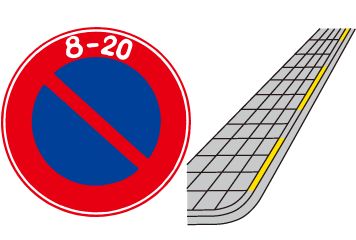
No parking
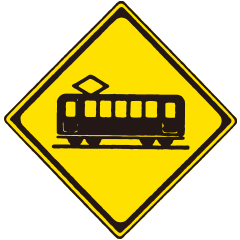
Railway crossing ahead
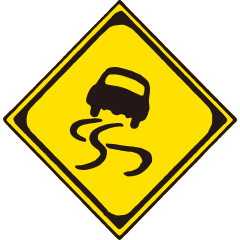
Slippery road
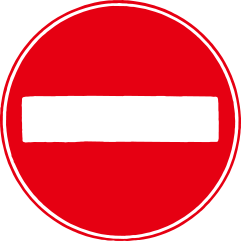
No entry
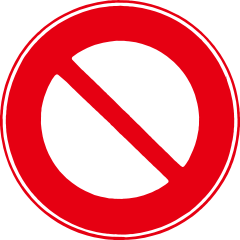
Closed to vehicles
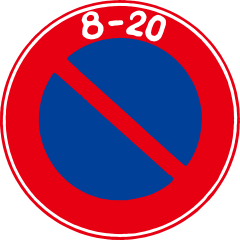
No parking
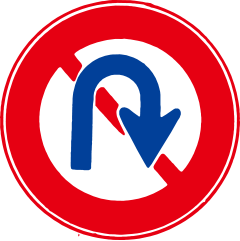
No U-turn
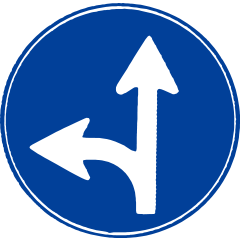
Follow the directions
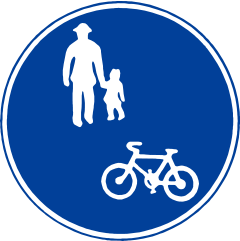
Pedestrian zone
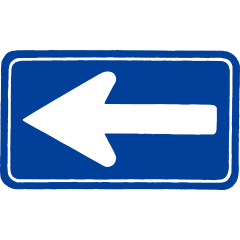
One way
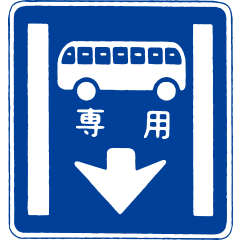
Exclusive lane
Types of traffic lights with meanings
Green light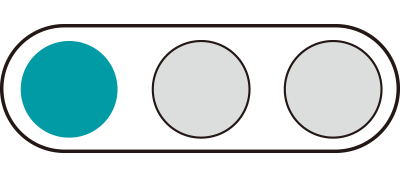 |
Pedestrians may proceed and cross. |
| Vehicles other than lightweight vehicles, and streetcars/trams may go straight or turn left or right. Mopeds making two-step right turn may go straight ahead to the point for turning right, and change the direction they are heading. | |
| Lightweight vehicles (bicycles, carts, etc.) may go straight and turn left. When turning right, these vehicles must proceed to the point of making a right turn, stop and change their direction to the right and wait at that point. | |
Yellow light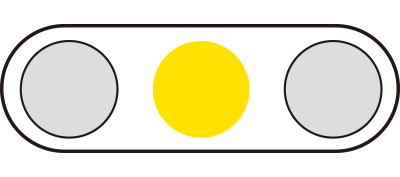 |
Pedestrians must not start to cross. A pedestrian who is already crossing the road must finish crossing quickly or else turn back. |
| Vehicles and streetcars/trams may not move further than the stopping point. However, if a vehicle is rapidly approaching the stopping point when the signal changes to yellow, and cannot stop safely, it may continue to proceed. | |
Red light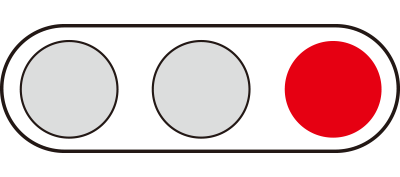 |
Pedestrians must not cross. |
| Vehicles and streetcars/trams may not proceed past the stopping point. | |
| A vehicle or streetcar/tram, when already making a left turn at an intersection, may continue to proceed even if the signal light on the left is red. | |
| A vehicle or streetcar/tram, when already making a right turn at an intersection, may continue to proceed even if the signal light on the right is red. In this case, the vehicle or streetcar/tram, must not obstruct the traffic of vehicles or streetcars/trams approaching on a green light. However, lightweight vehicles and mopeds making a two-step right turn must stop after crossing the road and wait at that point while the signal light on the right is red. | |
Green arrow light |
Vehicles may proceed in the direction indicated by the arrow even if the signal light is yellow or red. (Vehicles may also make a U-turn when the signal arrow is indicating a right turn.) However, in the case of a signal arrow indicating a right turn, lightweight vehicles and mopeds making a two-step right turn may not proceed. |
Yellow arrow light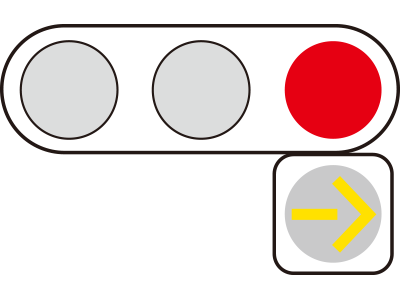 |
Streetcars/trams may proceed in the direction indicated by the arrow even if the signal light is yellow or red, but pedestrians and vehicles may not proceed. |
Flashing yellow light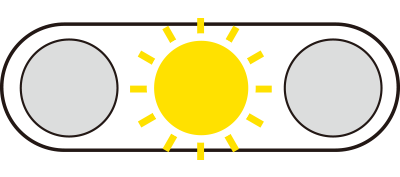 |
Pedestrians, vehicles and streetcars/trams may proceed carefully, paying attention to other traffic. |
Flashing red light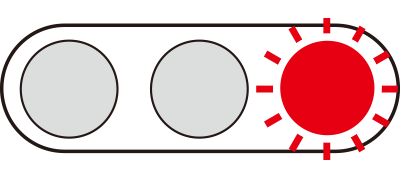 |
Pedestrians may proceed carefully, paying attention to other traffic. |
| Vehicles and streetcars/trams must stop at the stopping point before proceeding. |
(Note) The term “stopping point” in this table refers to the point just before the stop line. In the absence of such a line, it is defined as follows:
- 1.A point just before an intersection (where a crosswalk/pedestrian crossing or a bicycle crossing lane is located close to an intersection, just before the crosswalk/pedestrian crossing or the bicycle crossing lane);
- 2.A point just before a crosswalk/pedestrian crossing, a bicycle crossing lane or a railroad crossing in places other than intersections; or
- 3.The point where a traffic lights can be seen in places other than intersections without a crosswalk/pedestrian crossing, bicycle crossing lane or railroad crossing nearby.
The term “vehicles” refers to automobiles, mopeds, lightweight vehicles such as bicycles and carts, and trolley buses.
- JAF publishes Rules of the Road, which provides details of traffic regulations in Japan, and is available for purchase at JAF branch service counters or through the JAF website (Amazon.co.jp). The digital format is also available at the bookstores. For details, please contact a JAF Regional Office or check the JAF website.
Driving on the expressway
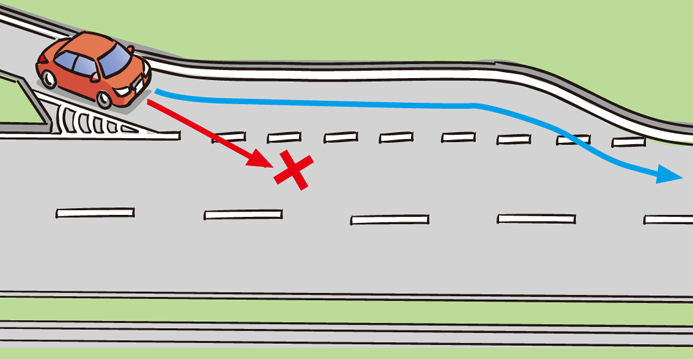
Accelerate in the acceleration lane fully before merging into the main lane.
- When the maximum or minimum speed is specified with road signs and displays, you must not exceed or drive slower than that speed limit.
- You must not drive on the side strip or shoulder of the expressway.
- Use the passing lane only for overtaking. Stay in the driving lane.
- Some areas have no service stations for long stretches. Refuel in advance.
Emergency Measures
Breakdowns
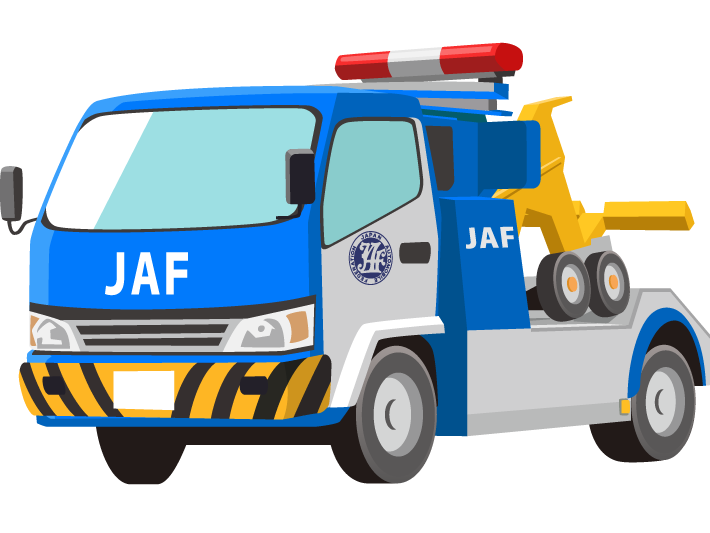
- If your vehicle breaks down on the road, move it out of the way of other vehicles. If you have to park your broken-down vehicle on the road at night, you must turn on your emergency flashing hazard lights to warn other drivers that your vehicle is parked.
- Leaving your broken-down vehicle on the road may cause a serious accident. Please call the JAF for the prompt removal of the vehicle from the road. The possibility of a vehicle colliding from behind makes staying with your broken-down vehicle very dangerous. After taking the necessary risk prevention methods, evacuate to a safe location such as outside the guardrail. Do not remain in the car.
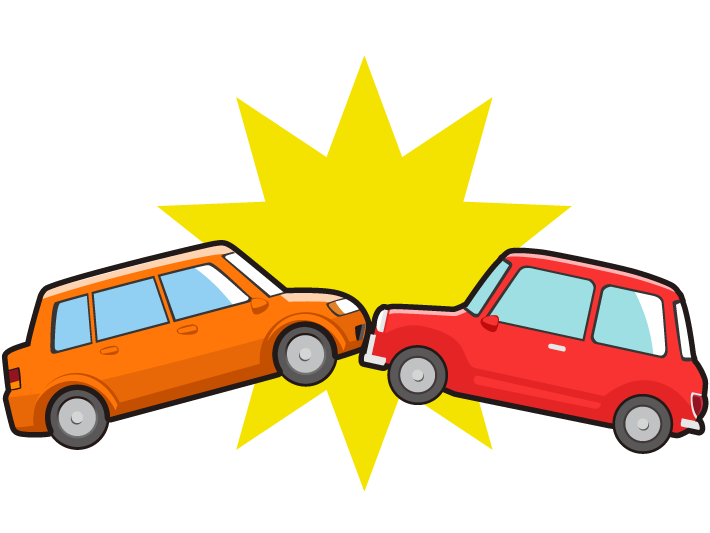
JAF Road Service Telephone Number: 0570-00-8139; or Abbreviated Dialing Number: #8139
- If you are a member of the JAF, you can use most of our road assistance services free of charge. The towing service for a broken-down vehicle is also free up to the first 20 km. JAF provides road assistance services throughout Japan 24 hours-a-day, 365 days-a-year. We recommend that you join the JAF for your security in an emergency. For details, please contact a JAF Regional Office.
- If you are a member of certain overseas automobile clubs, you may also be able to receive similar road services in Japan. For details, please contact a JAF Regional Office.
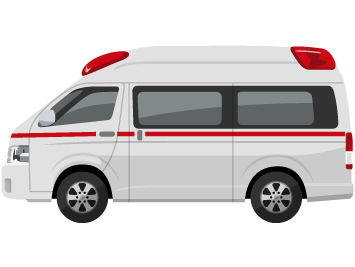
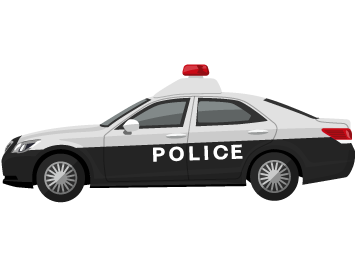
Medical Assistance (for injuries and sickness): 119 / Police (for accidents and other incidents): 110
- If you are involved in a traffic accident, first move your vehicle to a safe place out of the way of other traffic, and turn off the engine, to prevent the occurrence of secondary accidents.
- If anyone is injured, call 119 first and give whatever first aid you can to the injured person until an ambulance arrives.
- You must call the police (110) without fail and report the accident, providing information about the location of the accident, number of injured persons (if any), and degree of damage, and follow the police officer’s instructions.
- If you cannot call the police or an ambulance for yourself, ask someone around you to do so. If you leave the scene of an accident, you might be deemed to have committed a hit-and-run offence.
- You may insure against automobile accidents to reduce the financial burden in the event of an accident. There are two types of automobile insurance:
Compulsory automobile liability insurance
This type of insurance policy must be taken out at the time when a vehicle is purchased, or when a vehicle undergoes a safety inspection. This insurance covers the minimum amount of damages to be paid to the victims of automobile accidents and their families.
Voluntary insurance
You can also take out a voluntary insurance policy, which provides more cover than the compulsory automobile liability insurance. We strongly recommend you to take out this type of additional automobile insurance to cover yourself in the event of a serious accident.
Car Rental Reservations
These are websites for major car rental companies with useful information for driving in Japan. You can also make reservations through the internet or by phone.
Self-serve Gas
SOURCE: Fire and Disaster Management Agency (http://www.fdma.go.jp)
TRANSLATION: Japan Automobile Federation (JAF)
1. Get your gas at filling stations equipped with self-serve pumps!
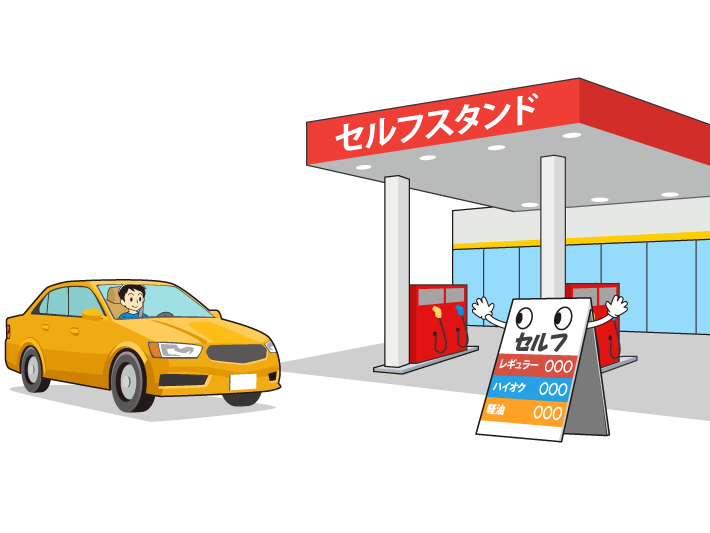
Self-service filling stations have easy-to-see signs at their entrance displaying in Japanese “セルフ” or “セルフサービス”
Self-service filling stations have fixed gas pumps with safety attachments. Some stations also have fuel pumps that are not designed for self-service. Drivers may not use these.
Before refueling
- 1.When entering the self-service filling station, look at the sign to confirm that the fuel pump is for self-serve use and pull up to the pump so that it is easy to refuel, taking care not to hit any equipment.
- 2.Put your car into park and turn off the ignition.
- 3.Unlock the door to the gas tank using the switch in your car.
- 4.Be sure to close the windows and doors when leaving the vehicle.
2. Know and check the proper type of fuel for your car! Make sure to remove all static!
When refueling
- (1)Select the type of fuel for your car. Some cars use gasoline, while others use diesel. It is important for drivers to know the proper type of fuel for their car. This has nothing to do with the size or type of vehicle. Take extra caution when you are refueling a car that you do not normally drive such as the company car or a rent-a-car, or if you are using a self-service station for the first time.
- (2)Be sure to touch the anti-static mat to remove any static that may have accumulated on your body before opening the fuel cap.
If there is no anti-static mat, be sure to remove any static that may have accumulated on your body by touching a metal portion of your vehicle.
- (3)Remove the nozzle for the type of fuel you selected in (1). The type of fuel is labeled near the nozzle (e.g. regular gasoline). If the nozzles or hoses are colored, high octane is always marked in yellow, regular gas is red, and diesel is green.
3. Follow the procedures and do it right!
You may start refueling after the attendant in the control booth has verified safety.
Handle the refueling alone.
Watch that children do not get close to the gas port.
Be sure to follow these instructions when fueling:
- ①Insert the nozzle securely into the gas port until it fits snugly.
- ②Pull the trigger on the nozzle until it clicks.
- ③The gas will automatically stop flowing when it is finished.
- ④After refueling, be sure to return the nozzle to its original position.
If the self-stopping mechanism activates soon after you begin refueling and you are not able to get gas, consult the attendant for advice on how to fill your tank.
4. Other precautions
- (1) Fire hazards such as lighters and tobacco are strictly prohibited! Gasoline vapor will blow from your gas port as you fill, and any gas drips or spills will cause large amounts of gasoline vapor. Never smoke or use lighters (including the cigarette lighter in your vehicle).
- (2)No subdividing gasoline into containers!
Do not subdivide gasoline into containers by yourself. - (3)Other
Always observe all cautions posted at the self-service station.
Before you driving in japan
Japan Automobile Federation introduces Japan's fundamental rules of road on English webpage.
Take as look and have a safe, informed drive!






